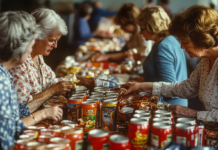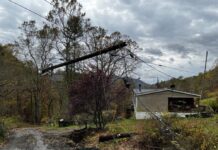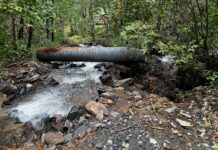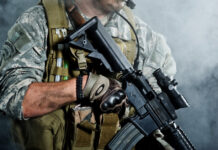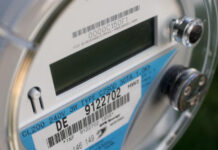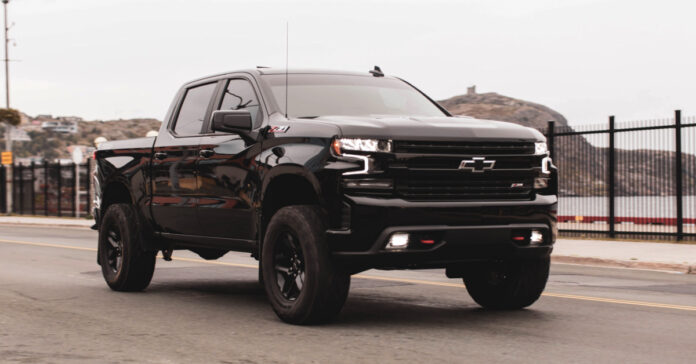
This weekend, I had to go out of state to a city a couple of hours away. It’s the first time I’ve traveled outside our local area since January. I looked at my truck and my EDC, and I made a few adjustments prior to my travel. I’ll get to those below.
First, we need to look at the challenge of packing to survive an unknown out-of-town disaster in a place where we have no friends or resources. Here’s an example: let’s assume I go to Books-a-Million to stock up on reading material. When I come out, I see looters are hitting the Target in the same shopping center. OK, there’s a pretty easy; get in my truck and head in the opposite direction. But what if this is a symptom of greater civil unrest, which includes crowds of protesters blocking roads?
Still, that is a far different scenario than being inside the bookstore when the power goes out, the emergency lighting doesn’t come on, and our cars won’t start. It’s also a difference scenario than feeling an earthquake and after we evacuate the store, we find a cloud of dust rising where the highway overpass has collapsed, making it difficult to move about.
To address out-of-town emergencies, I choose to divide them into two broad categories:
Category 1
This encompasses being stuck in (or perhaps struck by) a localized disaster. This could be the aforementioned riot or earthquake. It could be a six-hour traffic jam because of a major accident on the Interstate or a 24-hour traffic jam caused by a blizzard. It might be a flood, a terrorist attack, or even the sudden declaration of martial law.
In this category, I need to have food, drink and shelter to last anywhere from a few hours to a few days. I may need self-defense, but I it’s more likely I will need communications to let people know where I am, how I am doing, and what are my plans.
With my truck to provide shelter, my supplies and EDC bag, I feel adequately equipped for this scenario.
Category 2
This is the worst-case scenario in which I have to walk 90+ miles and over a mountain range to get home. Maybe’s it’s due to an EMP or a solar flare, but let’s assume that very few modern conveniences work. My short-term objective is to leave the crowded confines of the city and its high population density. Since this is a small city, it’s possible to walk from the city center to the rural area outside the suburbs in a day.
My mid-term objective is to walk the 90 miles home.
I am prepared for this, but less confident in my survival than I am in Category 1. I’m going to write about this scenario in a future article.
Truck Survival Kit Additions
I carry my survival gear in the contractor tool box on the back of the truck and a plastic tote in the backseat area. (You may recall that I removed the backseat to give me more room for cargo and the dog.)
My truck is well stocked with prepper gear by default, but things are so tense in the world today and with concern about bank runs, I added a few things to my truck. Here’s what I did:
- I threw in my heavy winter parka, something I often do this time of year. With daytime temps in the high 40s or low 50s, I didn’t expect to need it, but I knew it would prove useful if I had to spend the night in the car or walk home. I have work gloves in the truck, but the parka has heavy winter gloves in its pockets.
- I tied the laces of a pair of insulated hunting boots together and threw them into the backseat foot well. I was already wearing boots, but they were what I refer to as my dress boots or church boots. The boots I added were more comfortable, warmer, also more rugged. If I had to hike home, I’d want to wear them.
- I already had three bottles of water in the truck and one in my EDC, but I added two more, tucking them into the top of my spare boots to keep them from rolling around. Already in the truck is a Katadyn sports bottle with a built-in filter. It purifies the water when you suck it from the bottle through the straw. It’s an excellent piece of kit, but if I get trapped in the car or have to move quickly, it’s good to have bottled water on hand. Besides, who wants to put yucky water from a city stream in their bottle? I’d rather wait until I am well outside the city limits.
- I considered bringing an additional long gun but decided not to, since I was crossing state lines. That requires a long gun to be unloaded and locked up. (In the future, I would change this, as you will see below)
- As a compromise, I wore a different mag holder on my belt, carrying two Glock magazines instead of my the single spare mag I normally carry. There is another magazine in my EDC bag and three more in various locations in the truck. I also have a box of FMJs and a box of JHPs in the truck.
- I added a pouch of gummy bears for quick energy and few extra Kind bars to my EDC bag.
How Much Ammo is Too Much?
As a prepper, I don’t think you can have too much ammo. As the guy humping it around, I need to set a limit.
The problem with carrying lots of ammo is its weight. By lots, I mean more than six 15-round magazines for my pistol. If I have to choose between carrying five MRE entrées or 100 additional rounds of pistol ammo, I’m choosing food unless I’m in an urban area and expect to have to shoot my way out. Then again, if I have to unload 200 rounds at pistol range, my odds of surviving as a one-man force are dubious. I know I’ll need the food. I hope I won’t need the ammo. So food it is.
Trading my truck gun for a carbine that uses the same magazine as my pistol might be a good idea. Then I wouldn’t feel guilty about doubling up on Glock ammo. The .30 truck gun with scope and 100 rounds of ammo weighs about 12 pounds, which is an enormous weight to drag for 90 miles. If I had carried my AR pistol and 200 rounds, the weight would be about eight pounds, a big improvement. My Keltec Sub 2000 and 100 rounds of .40 weigh about seven pounds. Of course, a Ruger 10/22 takedown rifle and 200 rounds of ammo weigh in at six pounds.
In hindsight, I think I should have taken two rifles on the trip. I could keep the .30 battle rifle in the truck for self-defense on the road or in and around the truck, including inside the city. The power of the .308 round will be useful for punching through car doors and maybe building walls.
If the emergency is such that cars are not functional and I need to walk home, I could leave the .308 in my truck (or somewhere along the way) and just carry the .22. Sure, it’s not as powerful, but when you get right down to it, no one wants to get shot by a .22, it’s more useful for survival hunting, I can carry more ammo, and if the danger is close my .40S&W will put a stop to it.
Two People
Carrying more gear is where a second person would come in handy. If my wife was in the car, I would have brought a second backpack and we could carry twice as much gear and possibly two long guns. Since her EDC pistol is in .22LR, it would have ammunition commonality with the 10/22.
You may think that two people mean twice as much gear, but that’s not the case. For example, we can share the mess kit. We can share the tarp and blankets at night. We can also watch each other’s back, and if one gets injured, the other can patch them up.
Plus, if we walk up on someone in the boonies as a couple, we look like people who need help. If I walk up alone, I’m more likely to be perceived as a threat. This is another advantage of a takedown rifle; we can stuff it in a backpack if being seen carrying a rifle is a problem. The Keltec can also be folded in half and stuffed in a backpack.
The question is, what is more important: firepower or concealability? It depends on the nature of the disaster, whether local law enforcement is still active, or if we are in a world without rule of law.
I didn’t invite wife on the trip because we like to go to different stores. Besides, someone has to keep the home fires burning.
You may think of “Keeping the home fires burning” as a cliché, but in our case it’s a literal thing. As important as it is to keep the house warm, smoke in the chimney signals that someone is home. If someone is thinking of breaking in, they’ll see the chimney smoking and think twice.
More in the Future
Suffice to say, I made it home without running into any riots, weather delays (I beat the snow), earthquakes, or other disasters. There was no sign of bank runs or concerns about our financial condition. The lines at fast-food restaurants were long, but the lines at ATMs were non-existent. In the end, I didn’t need my preps, which is the best possible outcome. Still, I was glad to have them.
In the future, I’ll work up a scenario to examine what might have happened if I had to walk home.


